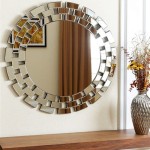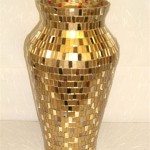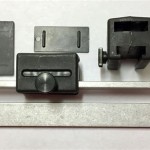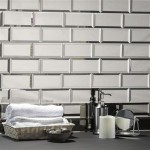How to Remove a Large Glued-On Bathroom Mirror
Removing a large bathroom mirror that has been glued to the wall presents a unique set of challenges. Unlike mirrors held by clips or frames, glued mirrors are directly adhered to the wall surface, making their removal a delicate process that requires careful planning, the right tools, and a patient approach. Improper removal can result in damage to the wall, breakage of the mirror, or even personal injury. This article provides a comprehensive guide to safely remove a large, glued-on bathroom mirror, minimizing the risk of damage and injury.
Before commencing the removal process, a thorough assessment of the situation is crucial. Identifying the type of adhesive used, the condition of the wall behind the mirror, and the size and weight of the mirror will help determine the most appropriate strategy. A mirror glued with construction adhesive will require a different approach than one adhered with mirror mastic. Similarly, a plaster wall will necessitate more caution than a drywall surface. Safety precautions are paramount and should be addressed before any physical work begins.
Safety First: Preparing for the Mirror Removal
Safety is the most important aspect of any DIY project. Before attempting to remove the mirror, adequate safety measures are essential to prevent injury. This includes wearing appropriate personal protective equipment (PPE) such as safety glasses to protect eyes from potential glass shards, work gloves to provide a secure grip and protect hands from cuts, and long sleeves to minimize skin exposure. Avoid wearing loose clothing that could get caught during the process.
Protecting the surrounding area is also vital. Spread a drop cloth or tarp on the floor to catch any falling debris or broken glass. If the mirror is near a sink or toilet, cover them securely to prevent damage from falling pieces. Good lighting is crucial for clear visibility. Ensure the work area is well-lit to avoid accidents and permit accurate assessment of the mirror's adhesion.
Consider the weight and size of the mirror. Large mirrors can be incredibly heavy and difficult to manage. Having a helper is strongly recommended. An assistant can provide support, help guide the mirror during removal, and assist in preventing it from falling and breaking. If working alone, take extra precautions and consider using suction cups to help support the mirror's weight as it is detached.
Finally, disconnect any electrical outlets or fixtures near the mirror. Water and electricity are a dangerous combination, especially in a bathroom environment. Furthermore, deactivating any electrical components near the mirror minimizes the risk of electric shock during the removal process.
Tools and Materials Required
Having the right tools and materials on hand will significantly simplify and expedite the mirror removal process. This ensures the project proceeds smoothly and minimizes the potential for complications or damage.
Essential tools include a utility knife with a sharp, retractable blade. This will be used to score the adhesive behind the mirror. A putty knife or scraper will aid in gently prying the mirror away from the wall. Opt for a sturdy one with a comfortable handle. Painter's tape is useful for securing the drop cloth, marking areas on the wall, and providing support during the removal. A pry bar can be strategically employed to create leverage, but it should be used cautiously to avoid damaging the wall. Several small wooden shims can be carefully inserted behind the mirror to help separate it from the wall without causing excessive stress. Suction cups (especially those designed for glass) are invaluable tools to provide a secure grip and help maneuver the mirror. A hammer may be needed, but only for gently tapping the putty knife or shims; avoid direct impact on the mirror. Mineral spirits or adhesive remover is essential for dissolving the residual adhesive left on the wall after the mirror is removed. A clean cloth or sponge will be needed to apply the solvent and wipe away the dissolved adhesive. Finally, trash bags are needed for disposing of broken glass and adhesive residue.
The Mirror Removal Process: Step-by-Step
Once the preparation is complete and all the necessary tools are gathered, the mirror removal process can begin. This involves a systematic approach to gradually detach the mirror from the wall, minimizing the risk of breakage.
The first step involves scoring the perimeter of the mirror. Use the utility knife to carefully score along the edges of the mirror where it meets the wall. This is done to sever the adhesive bond and prevent the paint or drywall paper from tearing when the mirror is removed. Aim for a shallow cut, focusing on separating the mirror from the wall surface. Repeat the scoring around the entire perimeter, applying consistent pressure.
Next, attempt to create small gaps behind the mirror. Gently insert the putty knife or scraper behind the mirror at one of the corners. Apply gentle pressure to try to create a small opening. If the adhesive is strong, tapping the putty knife with a hammer might help—use only light taps to avoid shattering the mirror. Once a small gap is established, insert a wooden shim to hold the space open. Repeat this process at various points around the mirror, working slowly and methodically.
Gradually increase the gap size by inserting additional shims. As the mirror begins to separate from the wall, insert more shims to widen the gap. This helps distribute the pressure and reduces the risk of the mirror cracking. Check if the mirror feels loose. If it is secured by the adhesive, repeat the process of scoring the perimeter and inserting shims. If using suction cups, attach them to the mirror's surface to provide additional support and leverage. This can make the separation process easier and safer. With assistance, slowly and carefully pull the mirror away from the wall. If working alone, use the suction cups to help support the mirror as it is detached.
Once the mirror is fully detached, carefully lower it to the ground or a prepared surface. Handle it with care to prevent it from breaking. Have a helper assist in carrying the mirror to a safe disposal area. Dispose of the mirror properly, following local guidelines for glass disposal. Broken glass should be carefully wrapped in newspaper or cardboard to prevent injury.
Addressing Adhesive Residue and Wall Repair
After the mirror is removed, the wall will likely have adhesive residue remaining. Removing this residue and appropriately repairing any damage to the wall are the final steps in the mirror removal process. This ensures a clean and smooth surface for future painting or renovations.
Begin by softening the adhesive residue. Apply mineral spirits or a dedicated adhesive remover to the affected areas. Allow the solvent to dwell for the recommended time, as indicated on the product label. This will soften the adhesive and make it easier to scrape off. Use a putty knife or scraper to carefully remove the softened adhesive. Avoid applying excessive pressure, which can further damage the wall surface. If the residue is particularly stubborn, reapply the solvent and allow it to dwell for a longer period.
After removing the adhesive, clean the wall surface. Use a clean cloth or sponge dampened with water to wipe away any remaining solvent or adhesive residue. Allow the wall to dry completely before proceeding with any repairs.
Inspect the wall for damage. The removal process may have caused damage such as torn drywall paper, dents, or holes. These imperfections need to be addressed before painting. Apply drywall compound to fill any holes or imperfections. Use a flexible putty knife to smooth the compound evenly over the surface. Allow the compound to dry completely, according to the manufacturer's instructions. Sand the repaired areas with fine-grit sandpaper to create a smooth and even surface. Be careful not to damage the surrounding areas. Prime the repaired areas with a drywall primer. This will help the paint adhere properly and provide a uniform finish.
Lastly, paint the repaired wall to match the existing paint. Apply one or two coats of paint, allowing each coat to dry completely before applying the next. This will blend the repaired areas seamlessly with the rest of the wall.
By following these steps, a large, glued-on bathroom mirror can be safely and effectively removed, minimizing the risk of damage to the wall and injury to the individual. Proper preparation, the right tools, and a patient approach are essential for a successful outcome. Taking the time to address any adhesive residue and repair wall damage will leave the bathroom ready for the next stage of renovation or decoration.

How To Remove A Bathroom Mirror Lowe S

How To Remove A Mirror Glued The Wall Forbes Home

How To Safely And Easily Remove A Large Bathroom Builder Mirror From The Wall Site Title

How To Safely And Easily Remove A Large Bathroom Builder Mirror From The Wall Site Title

How To Safely And Easily Remove A Large Bathroom Builder Mirror From The Wall Site Title

How To Safely And Easily Remove A Large Bathroom Builder Mirror From The Wall Site Title

How To Remove Mirror Off Wallsafely

Removing A Glued On Mirror From Wall

How To Remove A Large Mirror That S Glued The Wall Emerging Home

How To Remove A Frameless Mirror Like Nervous Grandma








